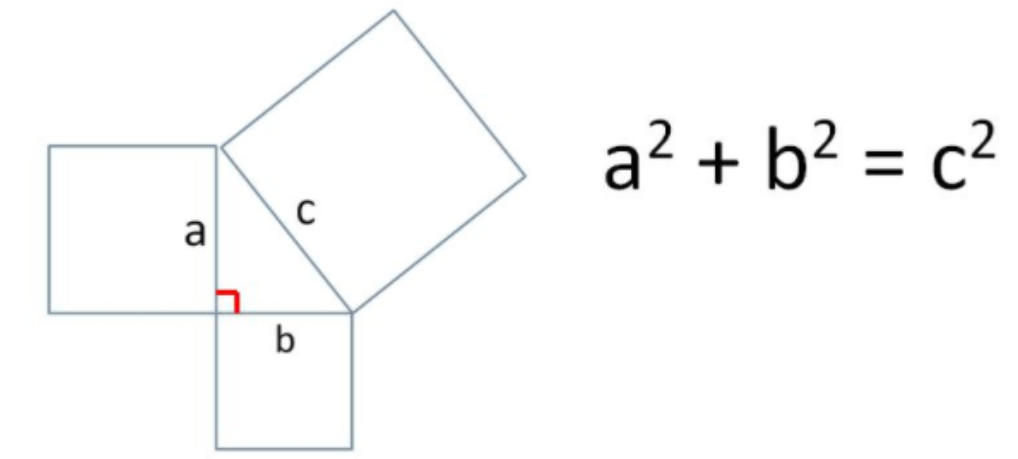
The area of the square built upon the hypotenuse of a right triangle is equal to the sum of the areas of the squares upon the remaining sides
Answer
582k+ views
Hint: Here we will use the relation inside the right-angled triangle, that relation is known as Pythagoras theorem.
If a, b, c are the sides of a right-angled triangle then \[{a^2} + {b^2} = {c^2}\] where c is the longest side know as hypotenuse
We will also use the concept that the area of the square with side is \[{a^2}\]
Complete step by step answer:
A right-angled triangle is given with sides a, b, c where c is the hypotenuse.
Our solution will be based on the below figure:

In the above figure the angle between side a and b is right and 90 degrees.
Squares are made on every side of the triangle
Here we can easily observe that area of the square whose side is a is equal to \[{a^2}\]
And we can also easily observe that area of the square whose side is b is equal to \[{b^2}\]
And we can also easily observe that area of the square whose side is c is equal to \[{c^2}\]
By Pythagoras theorem
\[{a^2} + {b^2} = {c^2}\]
(area of square with side a) + (area of square with side b) = (area of square with side c)
Hence, we can state that the given statement is True.
Note: In this type of questions we need to focus on the basic concept of geometry. We need to know the area of the square when the side of the square is given. Pythagora's theorem is need to be learnt.
If a, b, c are the sides of a right-angled triangle then \[{a^2} + {b^2} = {c^2}\] where c is the longest side know as hypotenuse
We will also use the concept that the area of the square with side is \[{a^2}\]
Complete step by step answer:
A right-angled triangle is given with sides a, b, c where c is the hypotenuse.
Our solution will be based on the below figure:

In the above figure the angle between side a and b is right and 90 degrees.
Squares are made on every side of the triangle
Here we can easily observe that area of the square whose side is a is equal to \[{a^2}\]
And we can also easily observe that area of the square whose side is b is equal to \[{b^2}\]
And we can also easily observe that area of the square whose side is c is equal to \[{c^2}\]
By Pythagoras theorem
\[{a^2} + {b^2} = {c^2}\]
(area of square with side a) + (area of square with side b) = (area of square with side c)
Hence, we can state that the given statement is True.
Note: In this type of questions we need to focus on the basic concept of geometry. We need to know the area of the square when the side of the square is given. Pythagora's theorem is need to be learnt.
Recently Updated Pages
Master Class 10 General Knowledge: Engaging Questions & Answers for Success

Master Class 10 Computer Science: Engaging Questions & Answers for Success

Master Class 10 English: Engaging Questions & Answers for Success

Master Class 10 Social Science: Engaging Questions & Answers for Success

Master Class 10 Maths: Engaging Questions & Answers for Success

Master Class 10 Science: Engaging Questions & Answers for Success

Trending doubts
The shortest day of the year in India

Why is there a time difference of about 5 hours between class 10 social science CBSE

Write a letter to the principal requesting him to grant class 10 english CBSE

What is the median of the first 10 natural numbers class 10 maths CBSE

The Equation xxx + 2 is Satisfied when x is Equal to Class 10 Maths

State and prove converse of BPT Basic Proportionality class 10 maths CBSE




